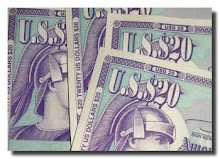Written by Antonio Sousa, Quantitative Strategies Analyst
Last week, the DailyFX Dynamic Carry Trade Portfolio was down by 351 pips. The most unprofitable trade was the position we held in the British pound with 241 pips gain in capital depreciation offset by $28 on interest payments accumulated along the last 5 days. Looking ahead, the current circumstances favor a further unwind of carry trades which could benefit lower yielding currencies like the Japanese yen and the Swiss franc. In fact, like we said in our Watch What the Fed Watches weekly report, despite the recent easing on financial conditions, confidence among traders in all the measures adopted by central banks to fight the credit crunch remains very poor. Short term interbank lending rates remain well above government bond yields of similar maturity and what the market needs is more transparency regarding the true amount of the losses related with the U.S. subprime market collapse.
Additional InformationMaking
profitable carry trades are not as easy as they use to be. Therefore we have created a dynamic carry basket that changes when the monetary policy outlook for a central bank changes or if there is significant event risk ahead. Follow the performance of the DailyFX Dynamic Carry Trade Basket
What is Carry TradeAll that is needed to understand the carry trade concept is a basic knowledge of foreign exchange and interest rates differentials. Money shifts from around the world in seek of the highest yield and the benefit of trading currencies is that you are dealing with countries that have interest rates, which are charged or received every single day. If you are positioned on the side of positive carry, you have the right to earn that interest, which can be quite lucrative over time.
Protective Stop-Loss
Substantial gains made from interest rate differentials provide undeniable evidence that the carry trade strategy has been very successful over the past few years. Still, this strategy involves significant risks and an adequate protective stop is required. We are using a protective stop-loss equivalent to five times the average true range. Stop losses are activated when we have a weekly close below the specified stop level.
Position Sizing
Our position size varies according to each currency volatility. Generally, the more volatile the currency is, the fewer lots we trade. For example, let's assume you have $10,000 and you are trading 10K lots, you decide to limit your risk per trade to 3% or $300 and the 90 days average true range for the EURUSD is 100 pips. In this case, if you go long EUR/USD you could buy 3 lots, since ($10000 * 3%) divided by (0.0100*10K) = 3 lots. In case the final result is not an integer you should always rounded it down to limit your exposure.
Carry Trade - Buy or Sell?
Friday, December 21, 2007 At: 12/21/2007 09:16:00 AM by Joyce.gardner
Foreign
Exchange Calculator
|
||||||||
|
| Conversion : What do you want to convert to? |
Rates as of Fri Feb 29 18:05:03 EST 2008
Note: Rates may change throughout the day and may differ at the time
of booking. These rates apply to foreign exchange transactions with the
exception of the purchase and sale of currency notes (cash).

